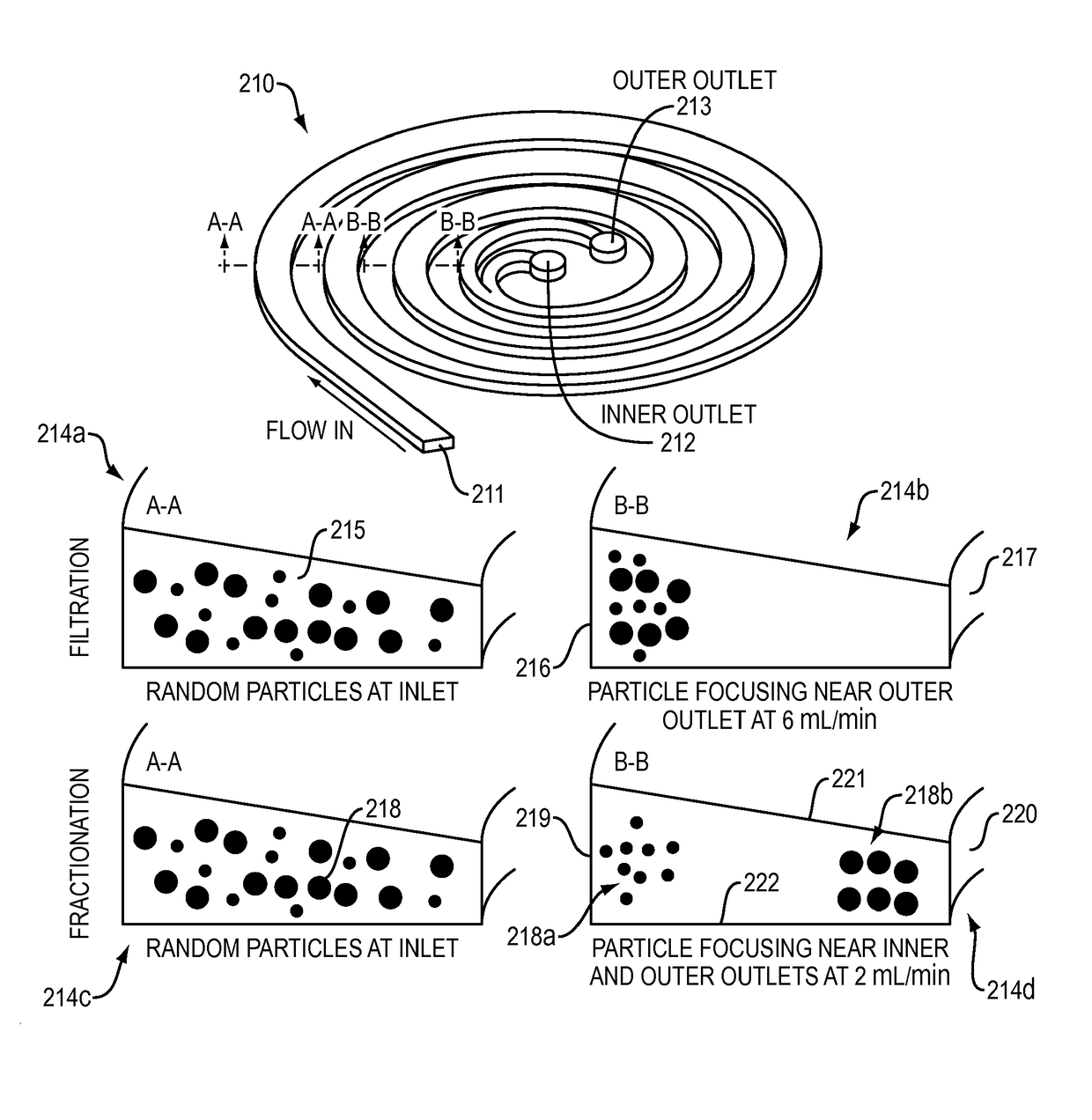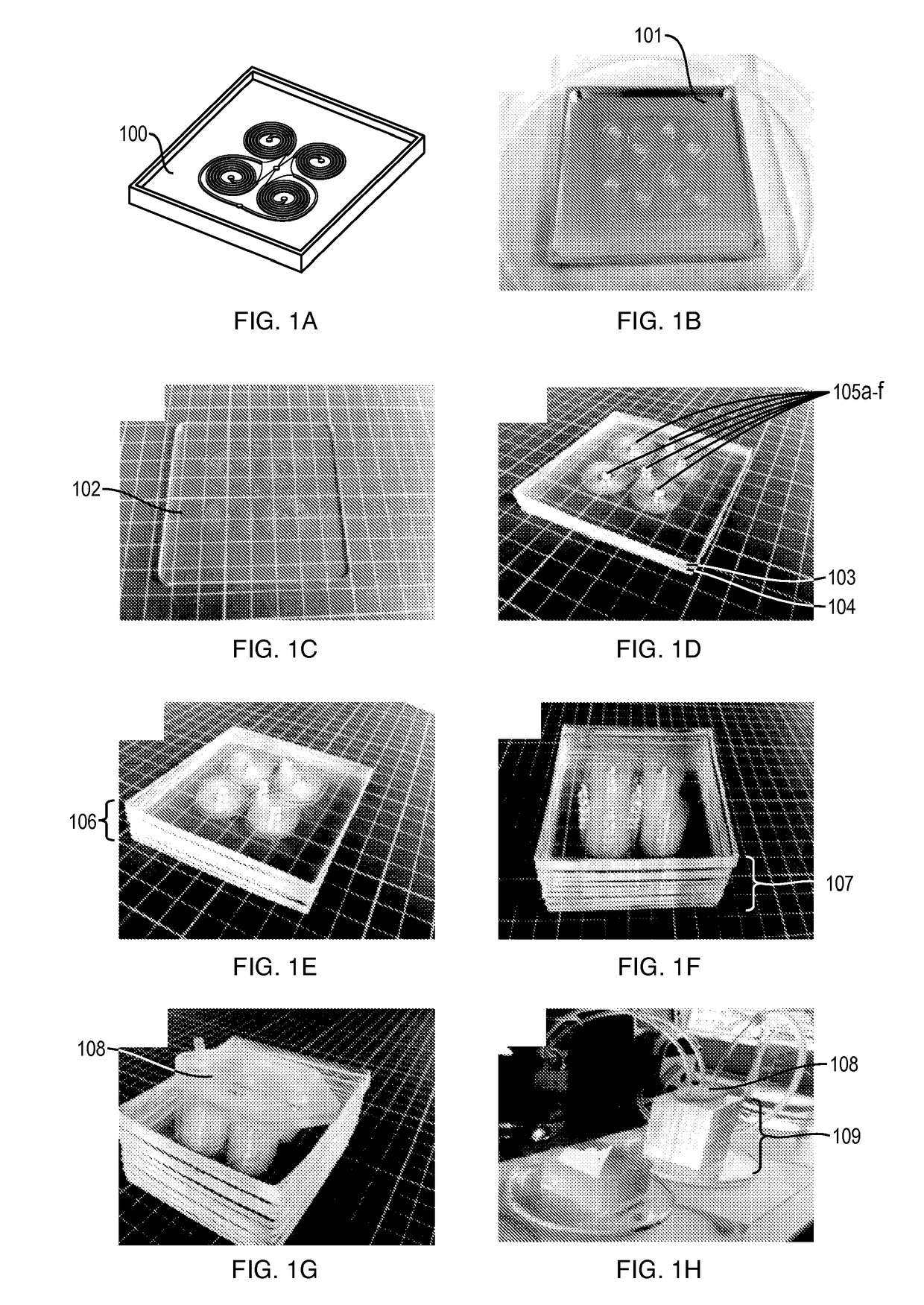Microfluidic system and method for perfusion bioreactor cell retention
a bioreactor and microfluidic technology, applied in bioreactors/fermenters, specific use bioreactors, glassware laboratories, etc., can solve the problems of unrelenting push, cost and reliability of cell retention devices, direct affecting product quality, productivity and eventually cos
- Summary
- Abstract
- Description
- Claims
- Application Information
AI Technical Summary
Benefits of technology
Problems solved by technology
Method used
Image
Examples
Embodiment Construction
[0033]A description of example embodiments of the invention follows.
[0034]An embodiment according to the invention provides a membrane-less, clog-free microfiltration platform for ultra-high throughput (on the order of liter / min) cell separation with extremely high yield, using inertial microfluidics. A developed system in accordance with an embodiment of the invention is a highly multiplexed microfluidic device consisting of multiple layers of PDMS sheets with embossed microchannels (i.e., up to 500 spirals) bonded together for continuous size-based cell sorting from large volume of biological samples. The technique utilizes the hydrodynamic forces present in curvilinear microchannels for cell focusing and sorting.
[0035]In a system in accordance with an embodiment of the invention, cells are separated solely due to fluidic interactions driven by externally-driven flow, thus the system is inherently clog-free and can run continuously without the need for membrane filter replacement ...
PUM
| Property | Measurement | Unit |
|---|---|---|
| pressure drop | aaaaa | aaaaa |
| diameter | aaaaa | aaaaa |
| flow rate | aaaaa | aaaaa |
Abstract
Description
Claims
Application Information
 Login to View More
Login to View More - R&D
- Intellectual Property
- Life Sciences
- Materials
- Tech Scout
- Unparalleled Data Quality
- Higher Quality Content
- 60% Fewer Hallucinations
Browse by: Latest US Patents, China's latest patents, Technical Efficacy Thesaurus, Application Domain, Technology Topic, Popular Technical Reports.
© 2025 PatSnap. All rights reserved.Legal|Privacy policy|Modern Slavery Act Transparency Statement|Sitemap|About US| Contact US: help@patsnap.com



